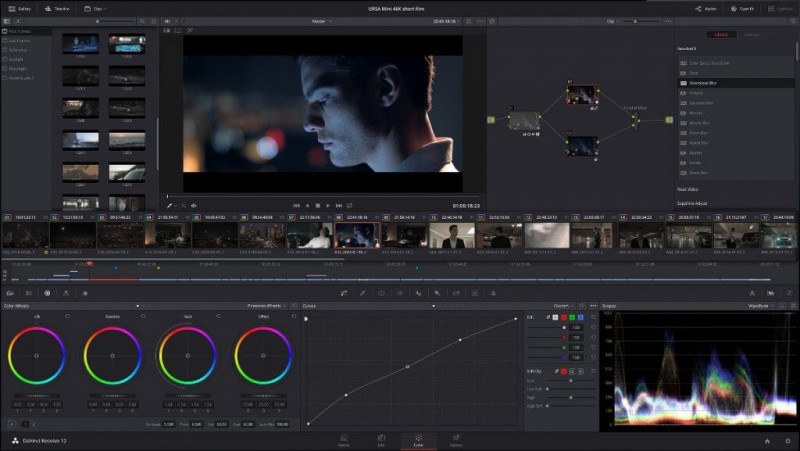
In the digital age, video content has become a powerful medium for communication, entertainment, and marketing. Whether you are a content creator, aspiring filmmaker, or social media enthusiast, learning how to edit videos with video editing software is a valuable skill. In this article, we will explore the step-by-step process of editing videos using popular video editing tools. So, let's dive in and unlock the secrets of video editing!
What is Video Editing?
Video editing is the process of manipulating and arranging video footage, audio, and other elements to create a coherent and engaging story. It involves cutting, rearranging, and enhancing clips to convey a specific message or evoke certain emotions from the audience. Video editing is an essential part of the post-production phase for any video project, whether it's a short social media clip or a full-length feature film.
Choosing the Right Video Editing Software
The first step in learning how to edit videos is selecting the right video editing software for your needs. There are various options available, ranging from beginner-friendly tools to professional-grade software. Some popular choices include Adobe Premiere Pro, Final Cut Pro, DaVinci Resolve, and iMovie. Consider your budget, the complexity of your projects, and the platform you'll be using before making a decision.
Importing and Organizing Footage
Once you have chosen your video editing software, it's time to import your footage into the project. Organize your files into folders to keep everything neat and easily accessible. Proper organization can save you a lot of time and frustration during the editing process, especially for larger projects with multiple clips and assets.
Understanding the Editing Timeline
The editing timeline is the heart of video editing software. It allows you to arrange your clips in chronological order, making it easier to visualize and manipulate the flow of your video. Most editing software uses a drag-and-drop interface, allowing you to move clips around and make adjustments effortlessly.
Basic Editing Techniques
Before diving into advanced features, familiarize yourself with the basic editing techniques. Trimming and cutting clips enable you to remove unwanted parts and keep only the essential content. Splitting and deleting footage come in handy when you need to divide a clip into smaller segments or remove unnecessary sections. Adding transitions can smoothen the jump between clips, creating a seamless viewing experience. Additionally, adjusting clip speed, applying filters, and effects can add creative touches to your video.
Advanced Editing Features
For more complex and polished videos, explore the advanced editing features available in your software. Working with layers allows you to overlay multiple elements, such as images, texts, and animations, on top of your video footage. Keyframing enables you to create animations and control the movement of elements over time. Color grading can enhance the visual aesthetics and set the mood of your video. Audio editing and mixing are crucial for achieving high-quality sound in your final product. Adding titles and graphics can help convey information or reinforce your brand identity.
Working with Audio
Audio plays a significant role in video editing, and it's essential to pay attention to its quality. Import your audio files and synchronize them with your video footage. Clean up audio by removing background noise and unwanted sounds. Adding suitable music and sound effects can enhance the emotional impact of your video.
Exporting and Rendering
After completing your editing masterpiece, it's time to export and render your video. Choose the appropriate format based on your target platform and audience. Consider the resolution, aspect ratio, and file size to ensure optimal playback quality and fast loading times.
Tips for Efficient Editing
To speed up your editing workflow, learn and utilize keyboard shortcuts that your software offers. Take advantage of presets and templates to apply consistent styles and effects across your video. And most importantly, save your work regularly to avoid losing progress in case of unexpected crashes or technical issues.
Troubleshooting Common Issues
Even the most experienced video editors encounter challenges from time to time. Learn how to troubleshoot common issues such as software crashes, laggy playback, missing files, and audio synchronization problems. Knowing how to address these problems will save you time and frustration.
The Future of Video Editing
As technology advances, the world of video editing continues to evolve. AI-powered editing tools are gaining popularity, automating certain aspects of the editing process and making it more accessible to beginners. Cloud-based editing solutions are also becoming prevalent, allowing seamless collaboration and access to projects from anywhere with an internet connection.
Video editing is a versatile and valuable skill that empowers you to bring your creative ideas to life. Whether you're crafting captivating content for your audience or pursuing a career in filmmaking, mastering video editing will undoubtedly open doors to endless possibilities. So, grab your favorite video editing software and start turning your visions into reality!
Unlocking the Power of Human-Machine Collaboration: A Path to Industrial Advancement
Ensuring Safety and Mitigating Risks: A Comprehensive Guide to Industrial Safety and Risk Management
YouTube TV Unveils Exciting Multiview Feature Allowing Simultaneous Streaming of Four Channels